-
Object-Oriented Analysis and Design
Works well in situations where complicated systems are undergoing continuous maintenance, adaptation, and design
-
What is UML?
Unified Modeling Language
-
What is reusability?
Recycling of program parts should reduce the costs of development in computer-based systems.
-
What is maintaining systems?
Making a change in one object has a minimal impact on other objects.
-
What are the Object-Oriented concepts?
Objects, classes, inheritance
-
What are objects?
Persons, places, or things that are relevant to the system being analyzed.
-
What are classes?
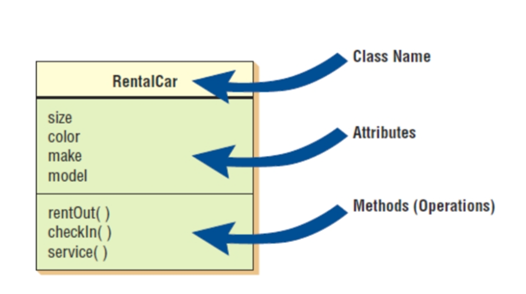
Defines the set of shared attributes and behaviors found in each object in the class.
-
What is inheritance?
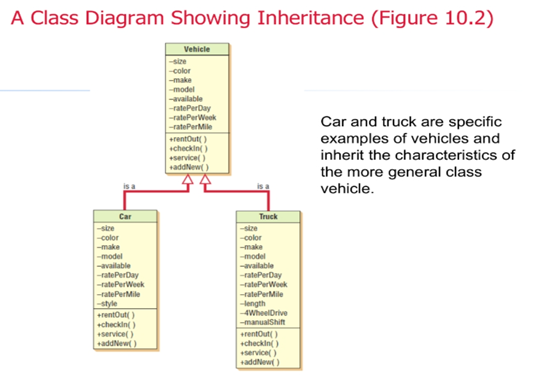
When a derived class inherits all the attributes and behaviors of the base class.
-
What is CRC?
Class, responsibilities, collaborators
-
What are CRC cards?
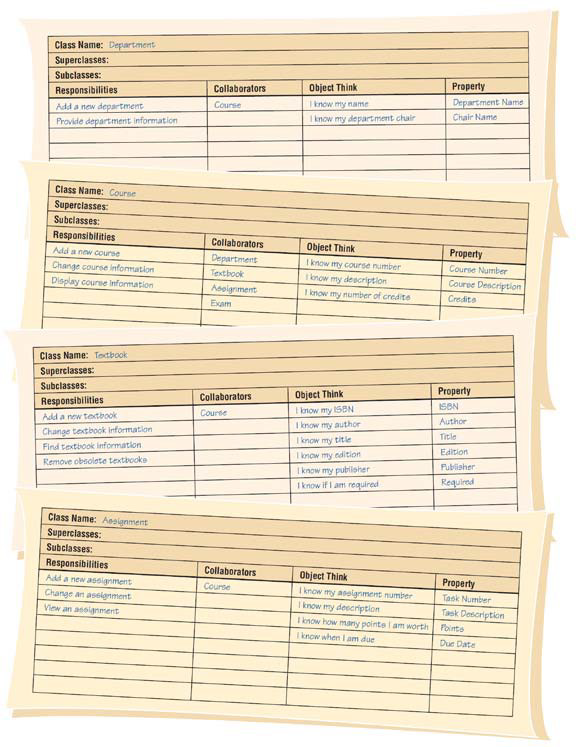
Are used to represent the responsibilities of classes and the interaction between the classes
-
Interaction during a CRC session?
Identify all the classes you can, Create scenarios, Identify and refine responsibilities.
-
The Unified Modelling Language (UML) Concepts and Diagrams
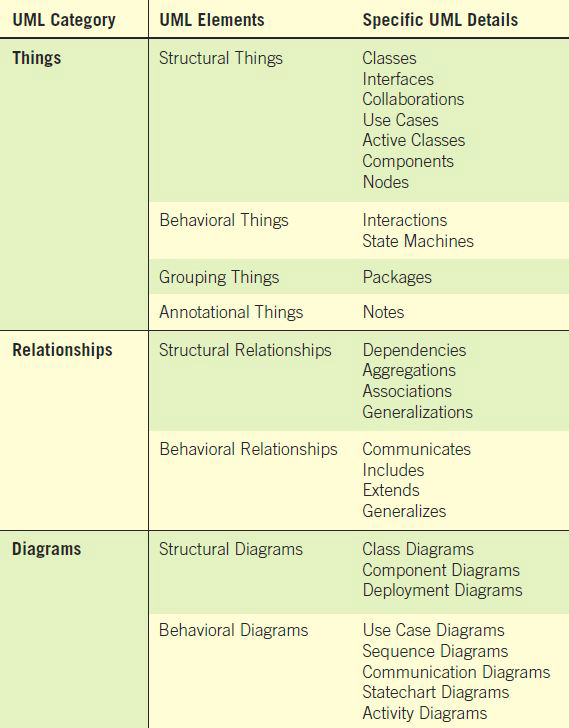
Things, Relationships, Diagrams
-
What are different things?
Structural things, Behavioral things, Describe how things work, Group things, annotational things
-
What are the different relationships?
Structural relationship, Behavioral relationships
-
What are under structural relationships?
Dependencies, Aggregations, Associations, Generalizations
-
What are under behavioral relationships?
Communicates, Includes, Extends, Generalizes
-
What are the different diagrams?
Structural diagram, behavior diagram
-
What are structural diagrams?
Used to describe the relation between classes
-
What are behavior diagrams
Used to describe the interaction between people (actors) and a use case (how the actors use the system)
-
What are under structural diagrams
Class diagrams, Object diagrams, Component diagrams, Deployment diagrams
-
What are under relationship diagrams
Use case diagrams, Sequence diagrams, Collaboration diagrams, Statechart diagrams, Activity diagrams
-
Commonly used UML diagrams
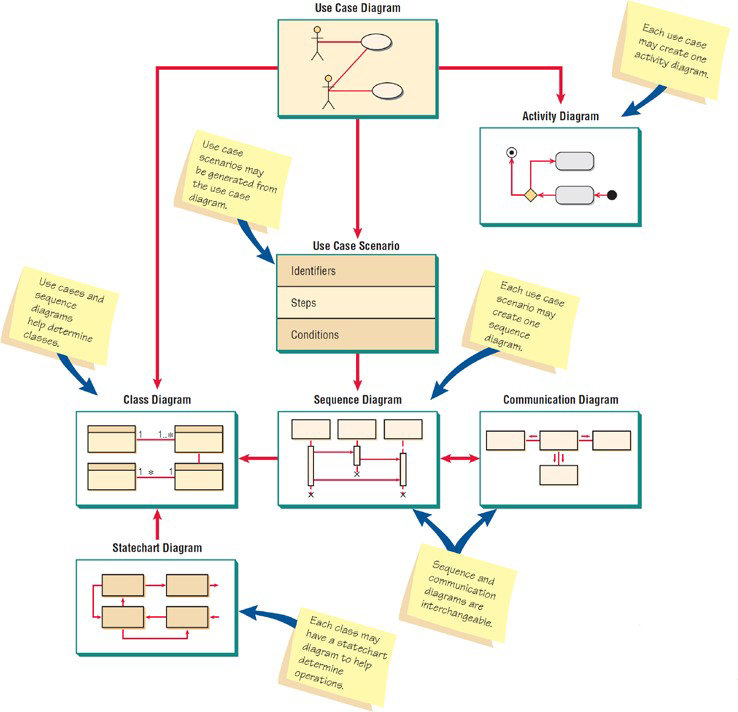
Use case diagram, use case scenario, activity diagram, Sequence diagrams, Class diagrams, Statechart diagrams
-
What is use case modelling?
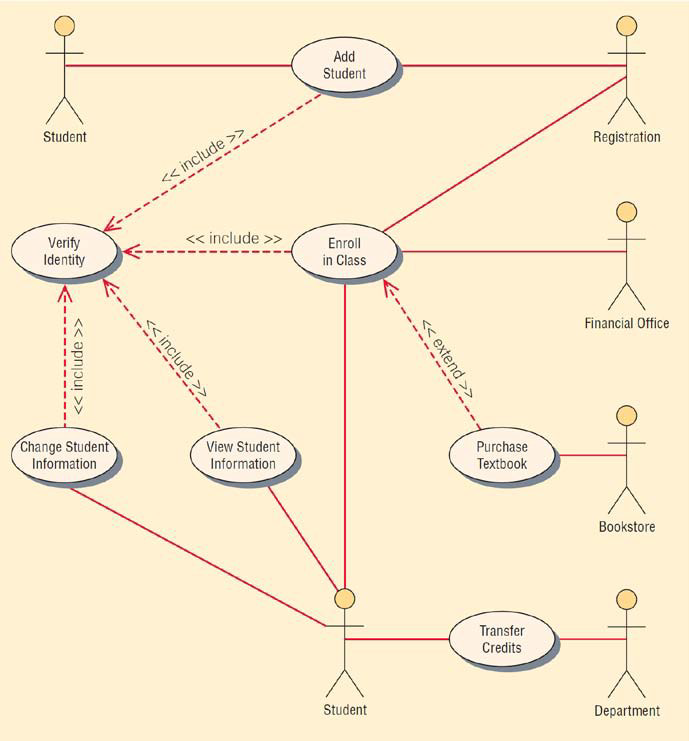
Describes what the system does, without describing how the system does it. Based on the interactions and relationships of individual use cases
-
Use case describes
Actor, event, use case
-
What are activity diagrams?
Show the sequence of activities in a process, including sequential and parallel activities, and decisions that are made.
-
What are the symbols under activity diagrams?
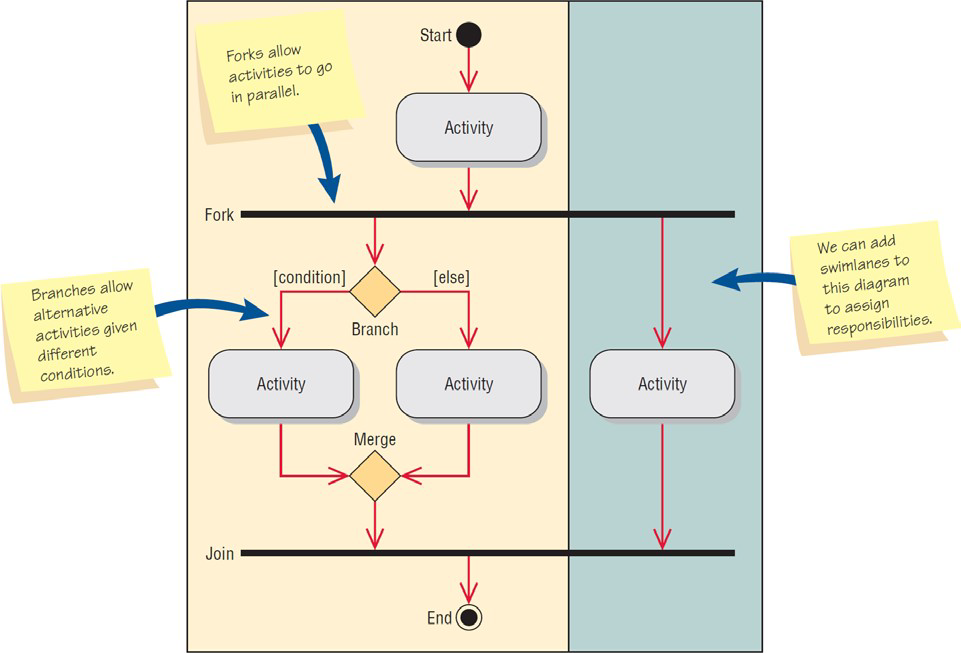
Rectangle with rounded ends, Arrow, Diamond, Long, flat rectangle, Filled-in circle, Black circle surrounded by a white circle, Swimlanes
-
Creating Activity Diagrams
Created by asking what happens first what happens second, and so on.
Must determine what activities are done in sequence or in parallel.
The sequence of activities can be determined from physical data flow diagrams.
Can be created by examining all the scenarios for a use case.
-
What are swimlanes?
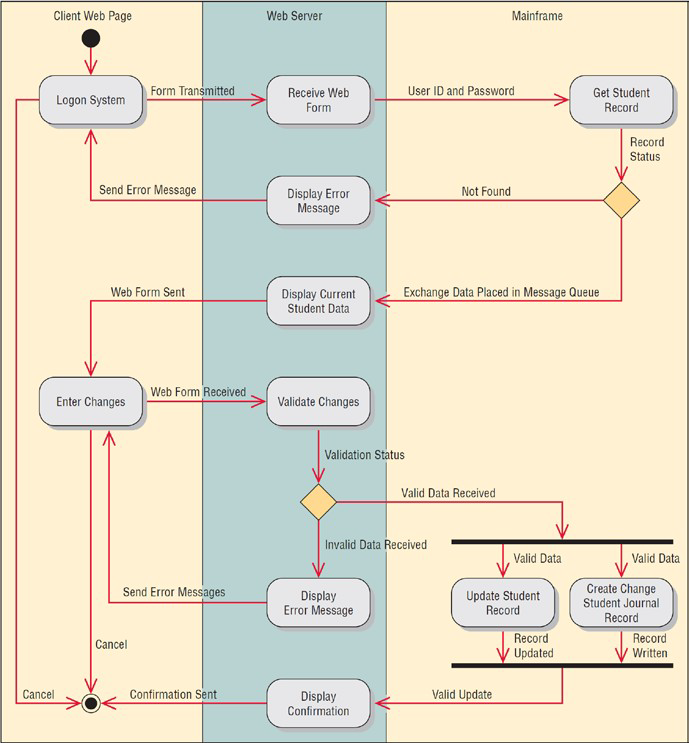
Useful to show how the data must be transmitted or converted
-
Activity Diagrams and Test Plans
May be used to construct test plans, Each event must be tested to see if the system goes to the next state.
-
Activity Diagrams Not Created for All Use Cases. Use an activity diagram when
It helps to understand the activities of a use case.
The flow of control is complex.
There is a need to model workflow.
When all scenarios for a use case need to be shown.
-
What is a Sequence diagram
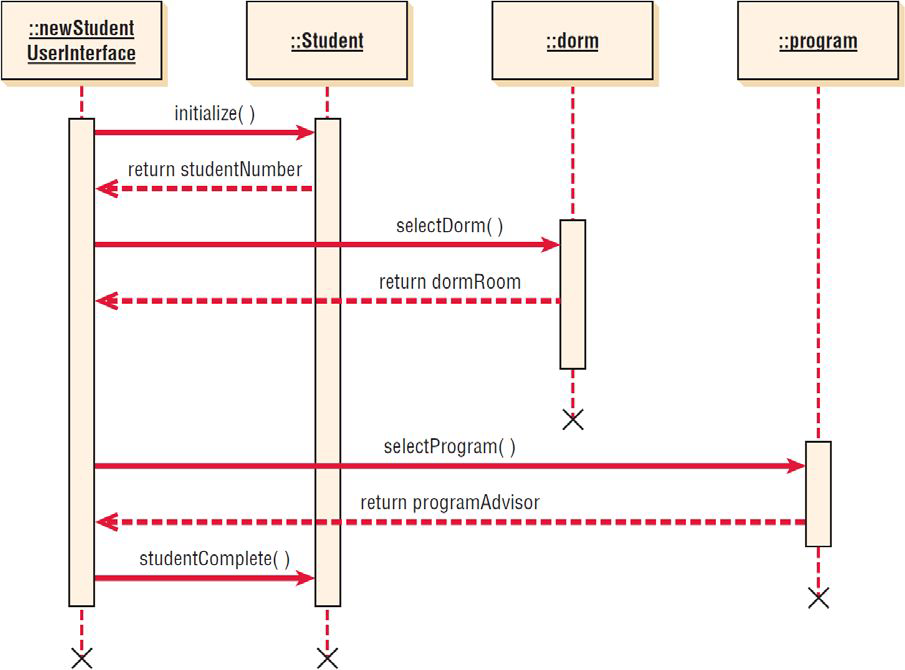
Illustrate a succession of interactions between classes or object instances over time
-
What is a Communication diagram
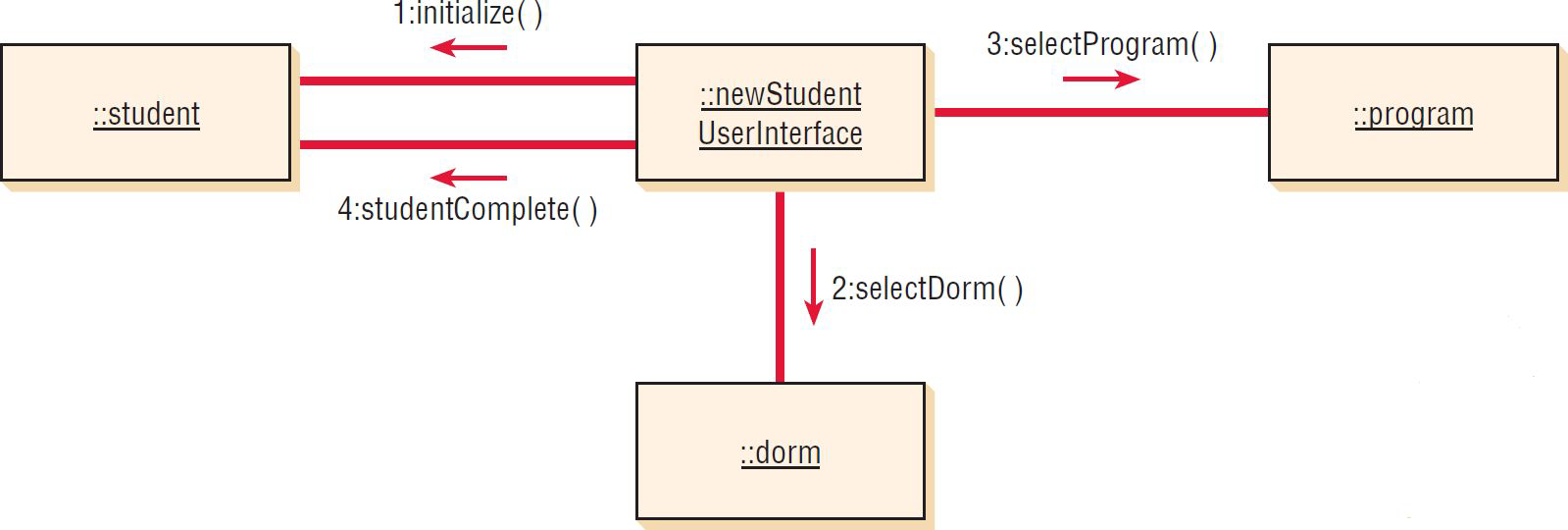
Describes the interactions of two or more things in the system that perform a behavior that is more than any one of the things can do alone
-
What is a Class diagram
Show the nature of the relationships between classes.
-
What are under class diagrams

Classes, attributes, methods
-
What are the different attributes under class diagrams
Private, Public, Protected
-
What are different methods under class diagrams
Standard, custom
-
What is method overloading
Including the same method (or operation) several times in a class
-
Types of classes
Entity classes, Interface classes, Abstract classes, Control classes
-
What are entity classes
Represent real-world items. The entities represented on an entity-relationship
diagram
-
Interface or Boundary Classes
Provide a means for users to work with the system.
-
What are abstract classes
Linked to concrete classes in a generalization/specialization relationship.
-
What are control classes
Used to control the flow of activities.
-
Sequence diagrams may be discussed using three layers
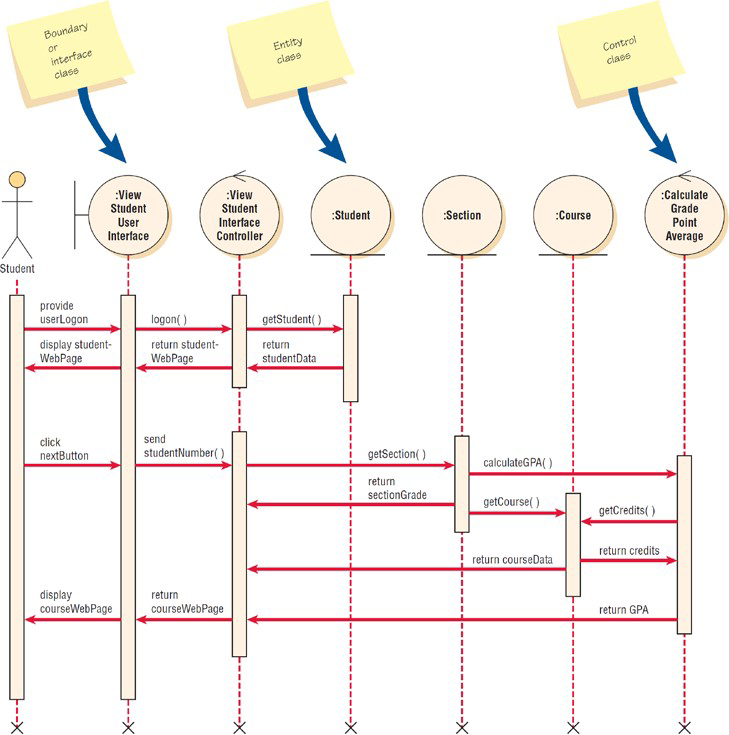
Presentation layer, business layer, persistence or data access layer
-
What is a presentation layer
What the user sees, corresponding to the interface or boundary classes.
-
Business layer
Containing the unique rules for this application, corresponding roughly to control classes.
-
Persistence or data access layer
For obtaining and storing data, corresponding to the entity classes.
-
Defining Messages and Methods
Each message may be defined using a notation similar to that described for the data dictionary.
The methods may have logic defined using structured English, a decision table, or a decision tree.
-
Create sequence diagrams
Include the actor from the use case diagram.
Define one or more interface classes for each actor.
Each use case should have one control class.
Examine the use case to see what entity classes are required.
The sequence diagram may be modified when doing detailed design.
-
Creating a Test Plan from a Sequence Diagram
Does each method return correct results?
Ensure that entity classes store or obtain the correct attribute values.
Verify that all JavaScript paths work correctly.
Ensure that the server control classes work correctly.
Ask, “What may fail?”
Determine what to do if something can fail
-
What are relationships?
The connections between classes
-
What are under relationships?
Associations, whole/part
-
What are associations?
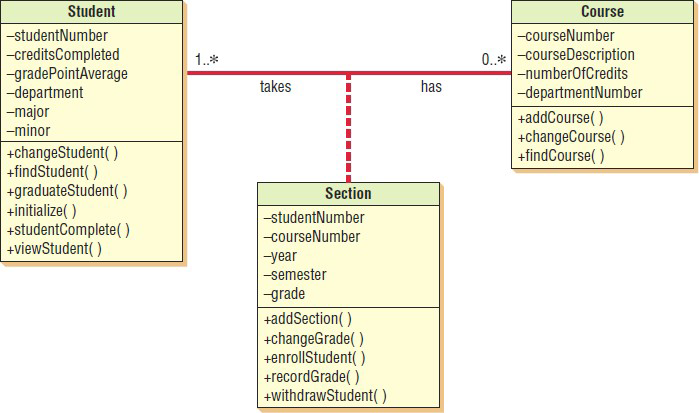
The simplest type of relationship
-
What are association classes?
Are those that are used to break up a many-to-many association between classes.
-
What is a reflexive association?
An object in a class may have a relationship to other objects in the
same class
-
What are whole/part relationships?
When one class represents the whole object, and other classes represent
parts
-
Categories of whole/part relationships?
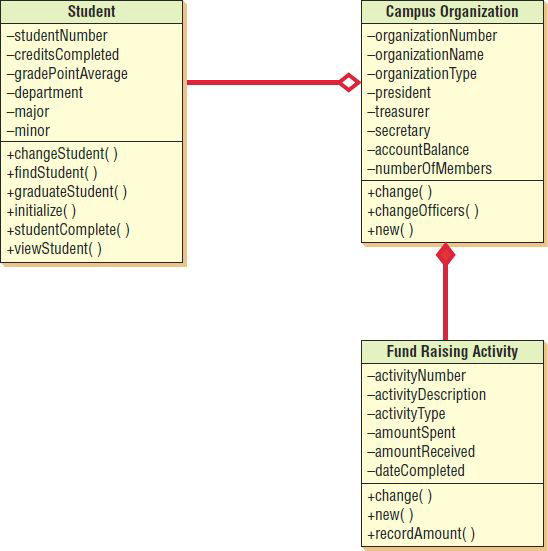
Aggregation, collection, composition
-
What is aggregation
A “has a” relationship
-
What is a collection?
Consists of a whole and its members.
-
What is composition
The whole has a responsibility for the parts, and is a stronger relationship.
-
Generalization/Specialization Diagrams
Generalization, Inheritance, Polymorphism, Abstract classes, Messages
-
What is generalization
Describes a relationship between a general kind of thing and a more specific kind of thing
-
What is inheritance under Generalization/Specialization Diagrams
Helps to maintain existing program code
-
What is polymorphism
The capability of an object-oriented program to have several versions of the same method with the same name within a superclass/subclass relationship
-
What are abstract classes under Generalization/Specialization Diagrams
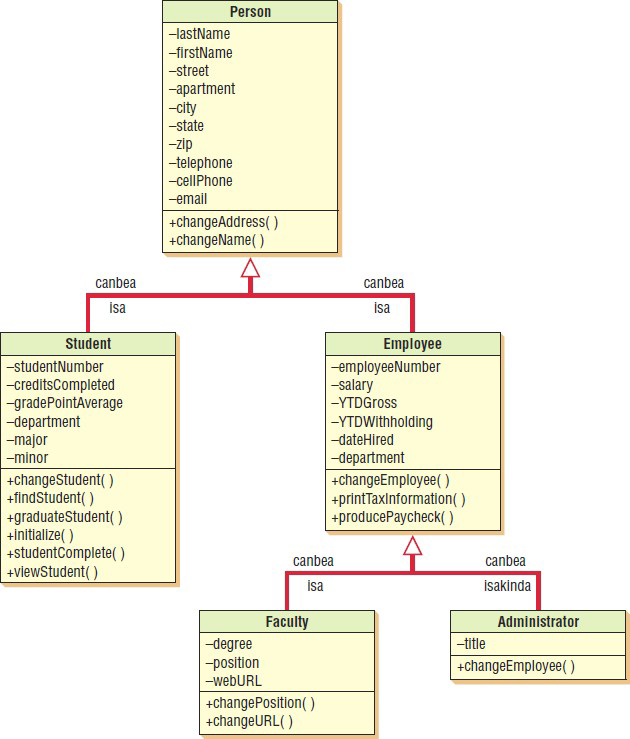
Abstract classes are general classes.
-
Finding classes
During interviewing or JAD sessions.
During facilitated team sessions.
During brainstorming sessions.
Analyzing documents and memos.
Examining use cases, looking for nouns.
-
Determining Class Methods
Standard methods, Examine a CRUD matrix
-
What are messages
Used to send information by an object in one class to an object in another class
-
What is a Statechart Diagram
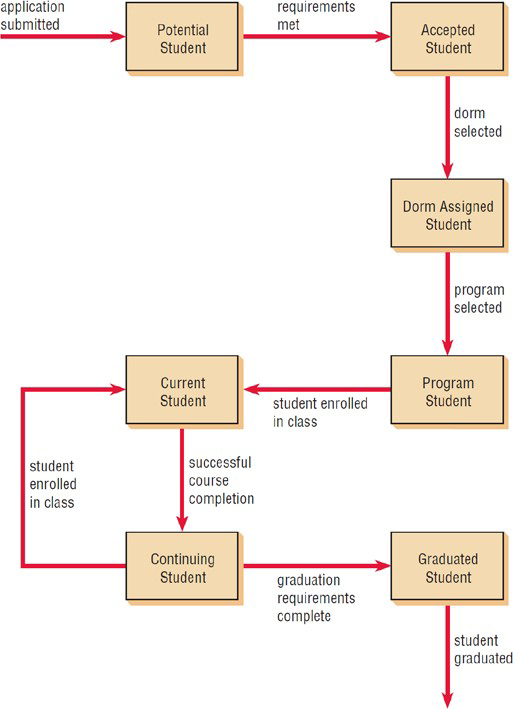
Used to examine the different states that an object may have
-
What are under statechart diagrams?
Created for a single class, objects, states, events
-
What are the different events?
Signals or asynchronous messages, Synchronous, Temporal events
-
When is a statechart diagram created?
A class has a complex life cycle.
An instance of a class may update its attributes in a number of ways through the life cycle.
A class has an operational life cycle.
Two classes depend on each other.
The object’s current behavior depends on what happened previously.
-
What are packages?
Containers for other UML things
-
Steps used in UML
Define the use case model.
Continue UML diagramming to model the system during the systems analysis phase.
Develop the class diagrams.
Draw statechart diagrams.
Begin systems design by refining the UML diagrams.
Document your system design in detail.


